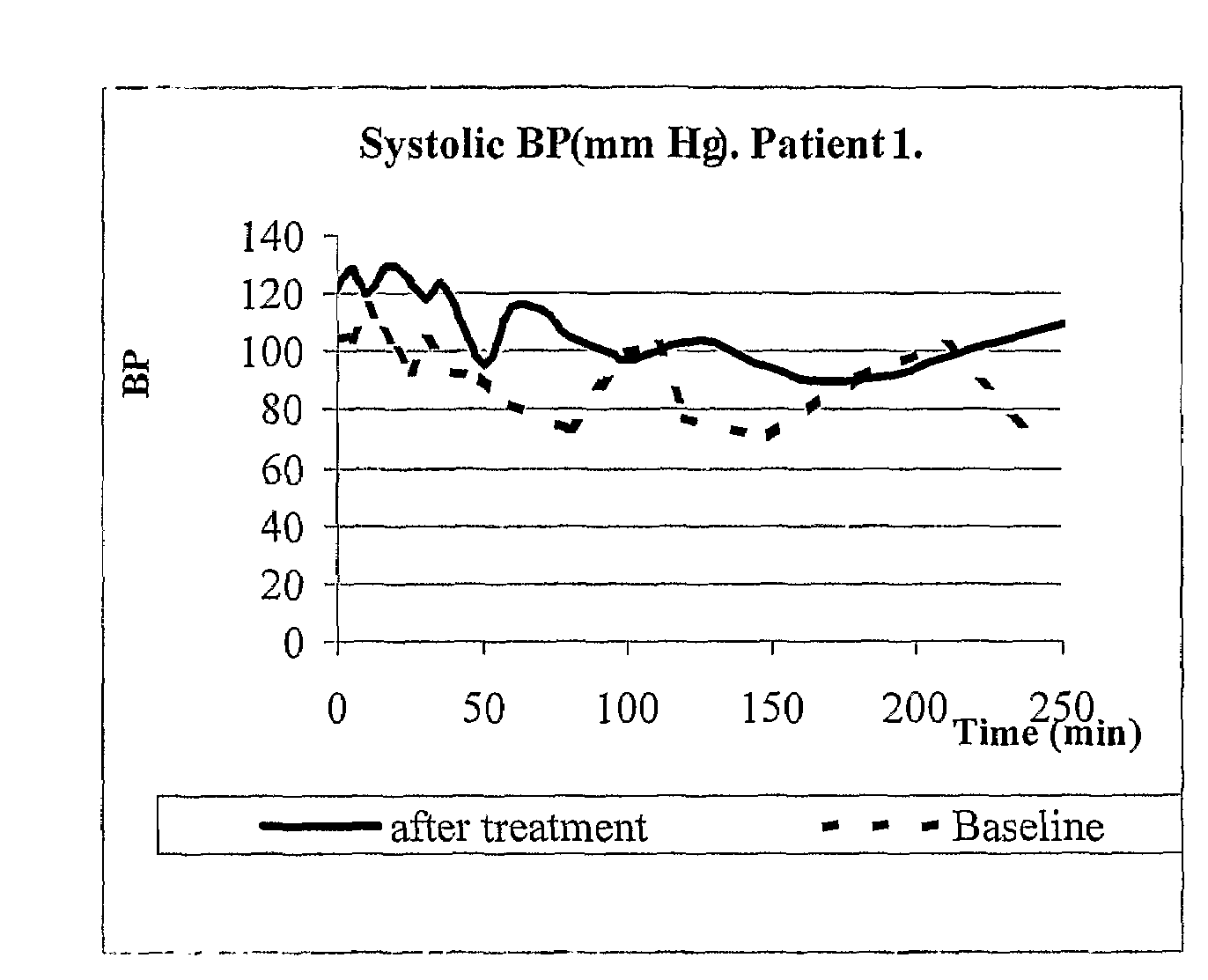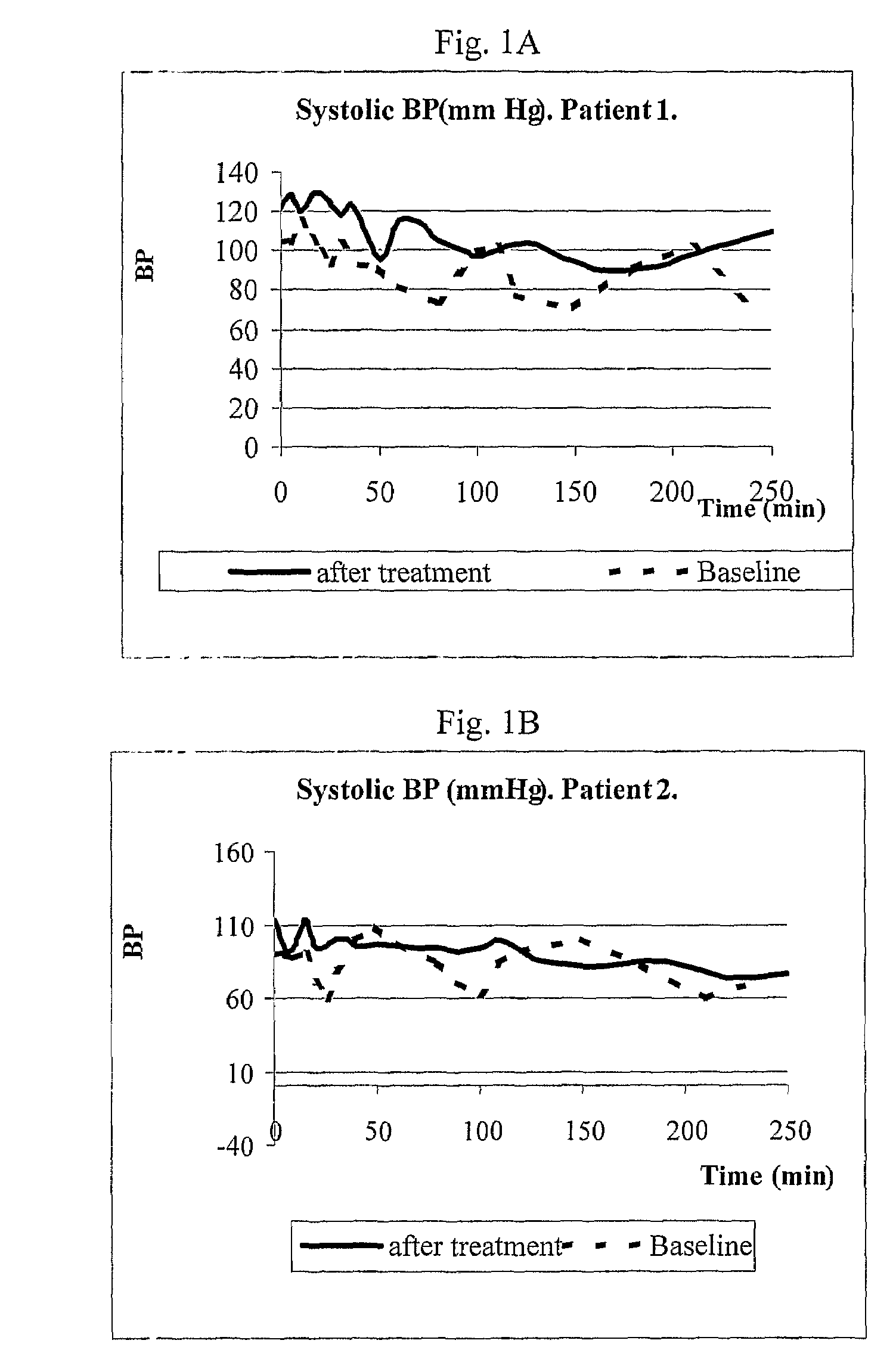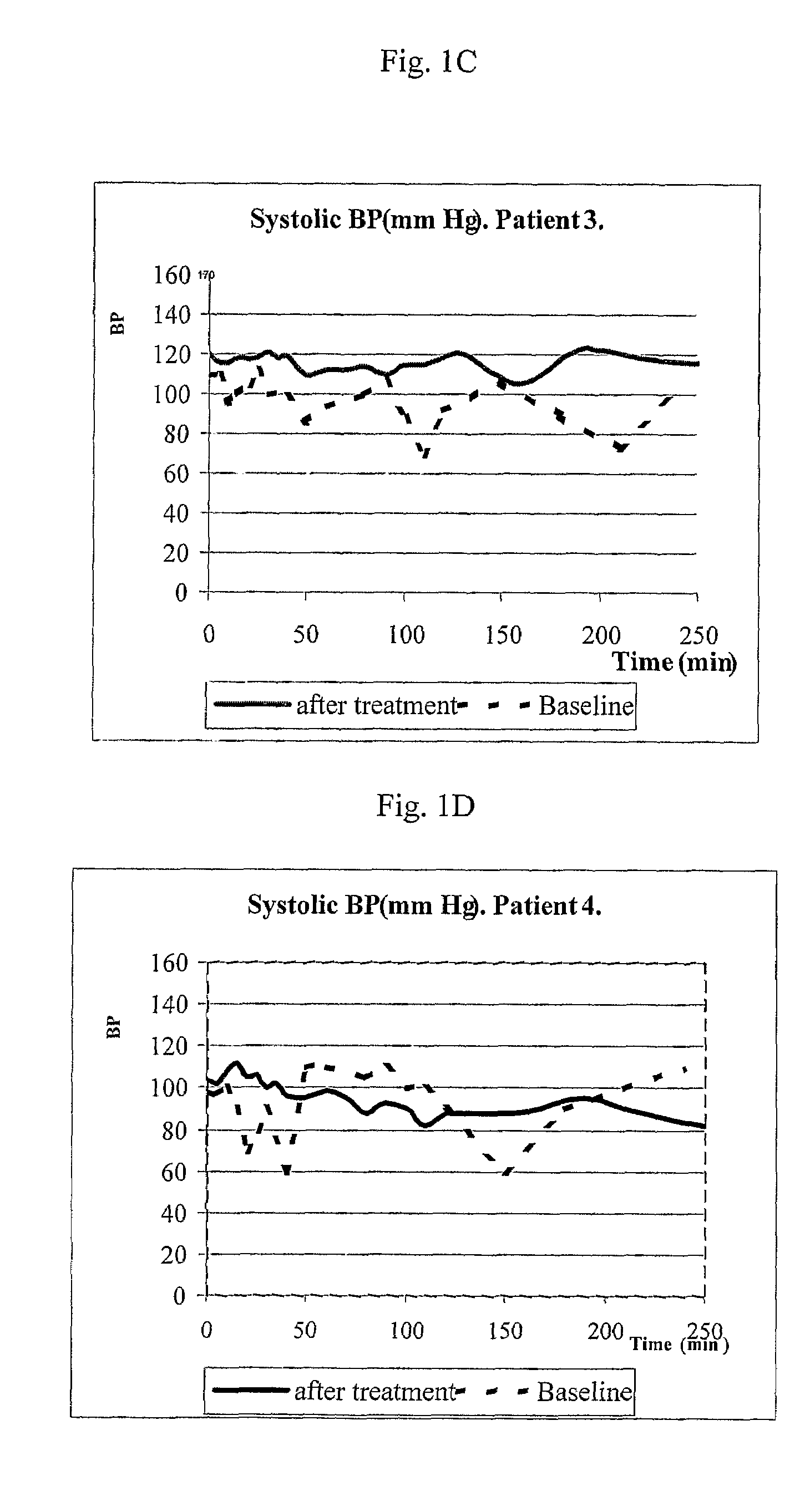Prevention of hypotension and stabilization of blood pressure in hemodialysis patients
a technology of hemodialysis and hypotension, which is applied in the field of salkylisothiouronium derivatives, can solve the problems of inability to physiologically compensate for the reduction of blood volume, renal dysfunction, and chronic renal failure (crf), and achieve the effects of stabilizing blood pressure, preventing hypotension, and preventing hypotension
- Summary
- Abstract
- Description
- Claims
- Application Information
AI Technical Summary
Benefits of technology
Problems solved by technology
Method used
Image
Examples
example 1
Formulations and Doses of MTR 107 and MTR 106
[0114]Based on animal toxicological studies and on the accumulated data on human patients, MTR107 was approved for a Phase I clinical trial. In this study, the pharmacokinetic profiles as well as safety of constant or escalating doses (0.3-2.4mg / kg) of MTR107 were assessed in 12 healthy male subjects. The results of the Phase I study indicated that MTR107 was well tolerated in doses up to 1.2 mg / kg with no recorded adverse events. Three out of 12 subjects exhibited somnolence as well as transient electrocardiographic alterations during treatment with 2.4 mg / kg (the highest dose). One involved bradycardia, the second involved AV block, and the third was characterized as the occurrence of extrasystoles. Review of pre-treatment (screening) and post study ECGs, as well as 24 hours ambulatory ECGs in these patients, revealed findings that paralleled the on-treatment observations; therefore, the relation of these adverse events to treatment wa...
example 2
MTR107 in Endstage Renal Disease (ESRD) Patients During Hemodialysis
I. Study Objectives
[0117]The purpose of the initial exploratory protocol was to analyze the efficacy of MTR107 in a first single dose 0.9 mg / kg administered as slow intravenous (IV) injection (10 ml diluted solution over 3 minutes). If no adequate blood pressure response was observed in first administration, a second dose of 1.2 mg / kg was administered, after a washout period of 72 hours. The study was conducted in ESRD patients with a predisposition for recurrent hypotensive episodes during hemodialysis sessions. The short-term safety and tolerability profile of MTR107 administered during hemodialysis was also evaluated and recorded in this set of patients. Plasma levels of MTR107 in ESRD patients on hemodialysis were measured, and the pharmacokinetic parameters were calculated. Hemodynamic effects at baseline and during hemodialysis were recorded and monitored. Measured hemodynamic parameters were: systolic (SBP), ...
example 3
Simulation of the Concentration Vs. Time Curves of MTR107 in Hemodialysis Patients
I. The simulations
[0153]The simulations of the multiple dosing of MTR107 to the hemodialysis patients were based on the applied pharmacokinetic model and the obtained values of the pharmacokinetic parameters (see FIG. 3 and Table 4).
[0154]Concentration vs. time data of subjects 5, 6, 7, and 8 were excluded from the analysis due to fluctuations in the obtained data that couldn't be attributed to the pharmacokinetic behavior of the drug, but rather to the differences in blood sampling procedure. Therefore, the modeling was based on the concentration vs. time data of subjects 1-4.[0155]The simulations were performed for the following settings:
[0156]Multiple administration of the same dose of MTR107 at 0, 48, 96, 144, 192 and 240 hr (0, 2, 4, 6, 8, and 10 days).
[0157]The single dose of 0.3, 0.6, 0.9, 1.2 and 2.4 mg / kg.
[0158]The doses administered as a 3-min infusion.
[0159]The dialysis procedure was started...
PUM
| Property | Measurement | Unit |
|---|---|---|
| cool temperature | aaaaa | aaaaa |
| temperature | aaaaa | aaaaa |
| systolic blood pressure | aaaaa | aaaaa |
Abstract
Description
Claims
Application Information
 Login to View More
Login to View More - R&D
- Intellectual Property
- Life Sciences
- Materials
- Tech Scout
- Unparalleled Data Quality
- Higher Quality Content
- 60% Fewer Hallucinations
Browse by: Latest US Patents, China's latest patents, Technical Efficacy Thesaurus, Application Domain, Technology Topic, Popular Technical Reports.
© 2025 PatSnap. All rights reserved.Legal|Privacy policy|Modern Slavery Act Transparency Statement|Sitemap|About US| Contact US: help@patsnap.com



